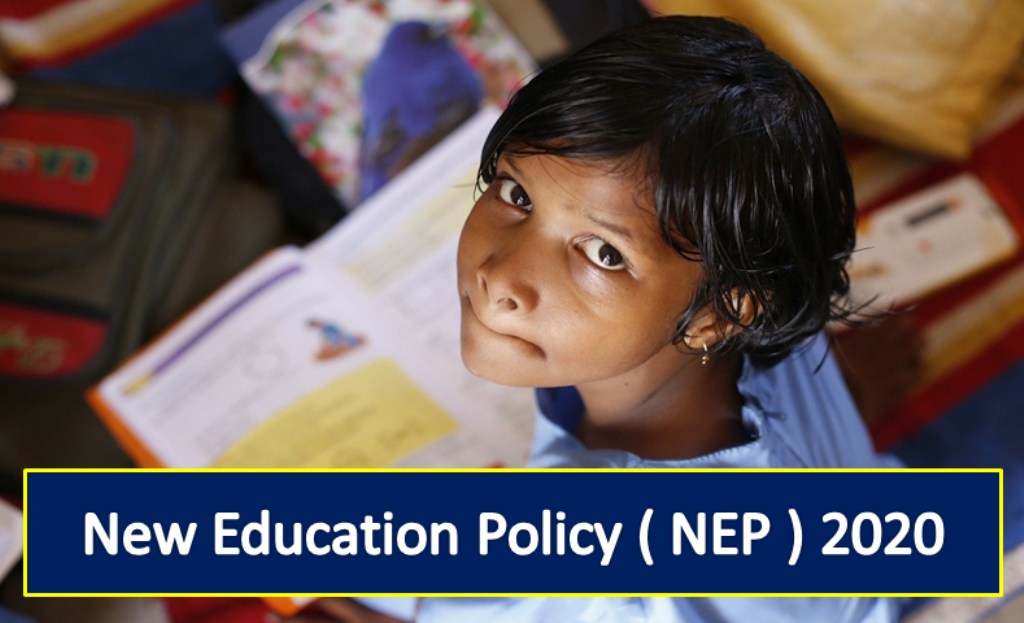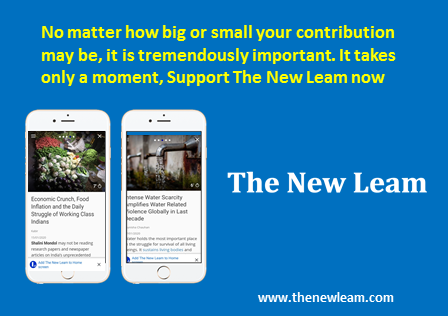The present government has been at the cusp of unveiling a national policy on education since four years now. The wait is over as the Union Cabinet on 29.07.2020 approved the New Education Policy 2020 (henceforth NEP 2020) which was notified the very next morning with the announcement that the policy will be implemented from the academic session 2021. NEP 2020 has been in the making since 2016 and several government-reports have been released from time to time underpinning its ideological-philosophical basis. These government-released policy-drafts and reports that can be regarded as its companion texts have outlined the change in policy-direction which has been now formalised in NEP 2020. The five NEP 2020 companion texts include the three policy-drafts issued by the MHRD in the last four years and two significant releases of the state think-tank NITI Aayog since 2017. The first text is the 217 page NPE, 2016 which is the report of the committee, constituted when the BJP government first came to office in 2014; headed by former Cabinet Secretary T.S.R Subramaniam to formulate a new education policy for the nation. The second a 43 page document ‘Some Inputs for A Draft National Education Policy’, 2016 seemingly based on this report. The government maintained ambiguity about the status of these two supposed policy-texts ( whether they were going to be pronounced as policy or not) till the HRD ministry again appointed a new nine-member committee in June 2017, headed by eminent space scientist Dr K.Kasturirangan to formulate a new education policy. The Press Information Bureau did maintain in a statement on 26 June 2017 that the latter committee will draw from both the above policy-drafts in preparing a new policy. The latter committee’s 484 page report Draft NEP, 2019 was formally released by MHRD, just a day after the new BJP lead government assumed office in May, 2019. The fourth and the fifth companion texts are NITI Aayog’s 176 page Action Agenda released in 2017, with a policy-vision aimed at orienting all the systems of the country (including ‘Education and Skill Development’) towards outcomes; and a September 2019 report The Success of Schools: School Education Quality Index a 153 page document on measuring the quality index of school education through a new policy-construct: School Education Quality Index (SEQI) aimed at assessing school quality through tracking various school related outcomes. The NPE 2020 is mainly located in an economistic framework of new public managerialism reiterating a focus on learning outcomes in school education. A deep critique of what is wrong with the outcome approach in school education and of how new public management may not be the best framework for school planning and management is already ignored in educational policy-making since the 1990’s. It is hardly surprising to find a new social imaginary of an economist-technocratic society underlying public policy by the present government. An example of this is that some of the votaries of NEP 2020 have raised the question that since GATT-WTO educational regime was legalised in 1995 by India becoming a signatory to it allowing education to be a tradable entity then why are foreign universities not encouraged to make foreign direct investment by setting up their campuses here, on their own norms and standards. World over there is a changing nature of the state which is embracing privatisation, public-private partnership models and public managerialism as the main approach to provisioning of social infrastructure like education which is reflected in educational policies of governments in other countries too.
There is no denying that policy-making is a value-laden activity by the state. Values are embedded in the policy-making process and the state’s commitment to democracy in education (as well as its implications); equalisation of educational opportunity and rendering classrooms inclusive becomes revealed in policy-texts. Also policy-cycles are not always linear, or even sequential; and the prescribed direction of change is often ahistorical. There is a new policy-cycle in India since 2016 when the economistic framework was essentialised with increasing non-state stake holding with unprecedented privatisation of school education. The striking illustration of this is the complete overlooking of the idea of the common school system of neighbourhood schools that was among the major recommendations of NPE, 1968 and was central to school education policy-making till the 1980’s. This idea was to create a free, non-fee charging, common school system in all regions of the country where children belonging to different socio-economic sections of society come together in the classroom. In this post-2016 policy-cycle genre the phrase common school system which received several sub-sections in earlier policies does not appear even once in the NPE’s 71 page operative policy-text. It is evidently a policy-concern that has been abandoned in the policy-parlance.
Dr K.Kasturirangan, the chairman of the panel that drafted NEP 2020 termed this as a ‘seminal moment’ in the educational trajectory of our country that will change India and ‘transform’ education for the next two decades. In his statements on the day the policy was notified he highlighted policy-continuity by regarding NPE 2020 draft as a response to the enormous challenges related to equity and quality of education in our country; policy-concerns that are a part of the unfinished agenda outlined in the previous two policies of post-independent India: National Policy on Education 1968 and the National Policy on Education 1986. According to him contemporary India with recognition of education as a fundamental right, neoliberalised economy, exponentially altered communication processes, increased participation of all social segments in political-economic processes, , life-threatening challenges like climate change and unprecedented technological advancement constituted an altered socio-political-economic context that was very different from that of NEP 2020’s predecessor policies. Consequently post-2016 years have marked a new policy-change phase in the educational planning and policy-making history of post-independent India. NEP 2020 is only the third national policy on education in the more than seven decades of independent India but the first one to emerge from this new policy-context of post-liberalisation India.
The NEP 2020 policy-text begins by speaking of education for ‘developing an equitable and just society’, ‘providing universal access to quality education’ , of emphasising ‘mathematics, computer science, and data science, in conjunction with multidisciplinary abilities across the sciences, social sciences, and humanities’, of multi-disciplinary learning for addressing ‘climate change, increasing pollution, and depleting natural resources’ not by a narrow posing but through ‘collaborative research’. In articulating the aims of education the policy-text combines instrumentality with deeper purposes of education by recommending that education should aim to ‘build character’ while preparing for gainful employment. In articulating these aims of education NPE 2020 makes reference to previous policies namely National Policy on Education 1968 and 1986, (modified in 1992) as also to the Right of Children to Free and Compulsory Education Act 2009. It does not forget to speak of the constitutional idea of education as a tool for democratic citizenship by speaking of education ‘for building an equitable, inclusive, and plural society as envisaged by our Constitution’.
It makes note of global education development agenda as articulated Sustainable Development Goal 4 for 2030 to which India became a signatory in 2015. The policy aims to develop an education system by 2040 that is second to none in the world ‘with equitable access to the highest-quality education for all learners regardless of social or economic background’ a lofty but elusive ideal that the constitution of India dreamed of more than 7 decades ago. In detailing the vision, content and processes for school education NEP 2020 envisions that children must not only learn but also ‘learn how to learn’. For this it recommends an ‘experiential, holistic, integrated, inquiry-driven, discovery-oriented, discussion-based, flexible, and of course, enjoyable’ pedagogy. It recommends a broad based school curriculum which includes ‘basic arts, crafts, humanities, games, sports and fitness, languages, literature, culture, and values, in addition to science and mathematics’ for a well-rounded education.
All of the above are elements of an egalitarian, progressive and liberal school education aimed at an intelligent understanding of the world. They are sought to be actualised through a broad-based curriculum and an active pedagogy that is based on what is known about how children best. In the history of ideas in school education policy in India none of these are new. The implementation issue is that how does India develop an education system that is second to none by 2040? One which provides ‘equitable access to highest-quality education’ to all the children of our country irrespective of their socio-economic status. This needs a thrust on public education through policy-solutions like the common school system. The recent policy-parlance has instead used the term affordability which did not even find mention in earlier pre-2026 policy-texts. NPE 2020 even speaks of encouraging quality education through private philanthropy. It is heartening to read Dr K. Kasturirangan write in30, July 2020’s The Times of India,
Resource efficiencies will be targeted without any compromise on equity and quality. Education is a public service and a public good, not a commercial activity or a source of profit. Public education will be adequately funded and fully supported to achieve the goals of this policy.
Policy only lays down a general direction which is neither legally mandatory nor with specific details. Moreover it is not accompanied with the financial outlays required to attenuate the policy-practice gap. There is no policy that did not recommend raising the education budget to 6% of GDP. This has never happened in actual practice with the education budget remaining at just a little over the half of this figure. Even though education is a concurrent subject it is only the Delhi’s state government that has been earmarking 25% of its budget for education since it came into office. It is the process of implementation that needs specific detailing which is something that the NPE 2020, like many other policy documents in post-independent India misses out on.
Jyoti Raina teaches at Department of Elementary Education, Gargi College, Delhi University, New Delhi.


